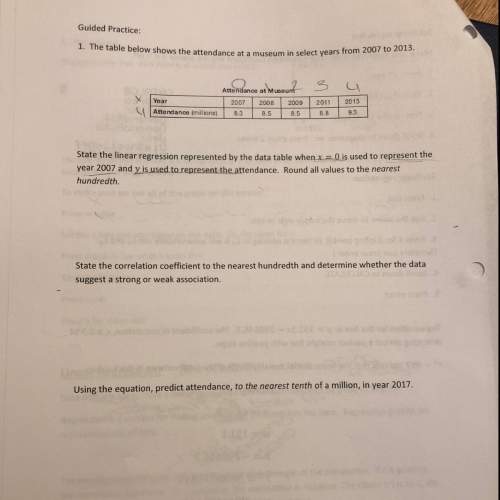
Mathematics, 30.07.2019 21:20, crimsonkiss
Solve: (3x^2-y)dx + (4y^3-x)dy =0 and find the solution passing through (1,1).

Answers: 3
Other questions on the subject: Mathematics

Mathematics, 21.06.2019 13:10, nikolevargas89
How do you answer this question? (step by step)
Answers: 3

Mathematics, 21.06.2019 19:30, sweetbri7p5v6tn
Aline passes through 3,7 and 6,9 what equation represents the line
Answers: 2


Mathematics, 22.06.2019 01:40, ashleygarcia0884
At wind speeds above 1000 centimeters per second (cm/sec), significant sand-moving events begin to occur. wind speeds below 1000 cm/sec deposit sand and wind speeds above 1000 cm/sec move sand to new locations. the cyclic nature of wind and moving sand determines the shape and location of large dunes. at a test site, the prevailing direction of the wind did not change noticeably. however, the velocity did change. fifty-nine wind speed readings gave an average velocity of x = 1075 cm/sec. based on long-term experience, σ can be assumed to be 245 cm/sec. (a) find a 95% confidence interval for the population mean wind speed at this site. (round your answers to the nearest whole number.) lower limit cm/sec upper limit cm/sec
Answers: 2
Do you know the correct answer?
Solve: (3x^2-y)dx + (4y^3-x)dy =0 and find the solution passing through (1,1)....
Questions in other subjects:


Business, 01.12.2020 16:50






















